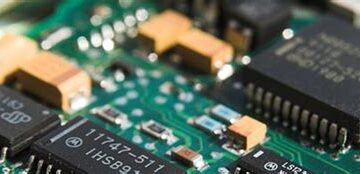Overview of the SMT Equipment Market
Surface Mount Technology (SMT) is a method of manufacturing electronic circuits by mounting components directly onto the surface of a printed circuit board (PCB). This technology has revolutionized the electronics industry by enabling the production of smaller, lighter, and more compact devices. SMT equipment includes a range of machines and tools used in the assembly process, such as pick-and-place machines, reflow ovens, inspection systems, and soldering equipment.
The SMT equipment market has been growing steadily over the past few years, driven by the increasing demand for electronic devices across various sectors. According to a recent market research report, the global SMT equipment market size was valued at $5.2 billion in 2020 and is expected to reach $9.1 billion by 2031, growing at a CAGR of 5.5% during the forecast period.
Key Drivers of the SMT Equipment Market
-
Miniaturization of Electronic Devices: The trend towards smaller, more compact electronic devices is a major driver of the SMT equipment market. As consumers demand devices with more features and functionality in smaller form factors, manufacturers are turning to SMT to achieve higher component density and reduce the size of PCBs.
-
Growing Demand for Consumer Electronics: The consumer electronics industry is a significant end-user of SMT equipment, with products such as smartphones, tablets, laptops, and wearables driving demand. As the consumer electronics market continues to grow, the demand for SMT equipment is expected to increase accordingly.
-
Automotive Electronics: The automotive industry is increasingly incorporating electronic components into vehicles, from infotainment systems to advanced driver assistance systems (ADAS). SMT equipment is essential for manufacturing these complex electronic systems, and the growth of the automotive electronics market is expected to drive demand for SMT equipment.
-
5G and IoT: The deployment of 5G networks and the growth of the Internet of Things (IoT) are expected to create new opportunities for the SMT equipment market. 5G technology requires advanced electronic components, such as high-frequency antennas and RF modules, which can be manufactured using SMT. Similarly, the proliferation of IoT devices will drive demand for compact, low-power electronic components that can be produced using SMT.
Market Segmentation
The SMT equipment market can be segmented based on various factors, including equipment type, application, and geography.
Equipment Type
-
Pick-and-Place Machines: These machines are used to automatically place surface mount components onto PCBs. They are the most widely used type of SMT equipment and account for the largest share of the market.
-
Reflow Ovens: Reflow ovens are used to solder surface mount components onto PCBs by applying heat to melt the solder paste. They are an essential part of the SMT assembly process and are used in conjunction with pick-and-place machines.
-
Inspection Systems: Inspection systems are used to ensure the quality and accuracy of the SMT assembly process. They include automated optical inspection (AOI) systems, solder paste inspection (SPI) systems, and X-ray inspection systems.
-
Soldering Equipment: Soldering equipment includes wave soldering machines, selective soldering machines, and rework stations. These machines are used to solder through-hole components and perform rework on assembled PCBs.
Application
-
Consumer Electronics: The consumer electronics industry is the largest end-user of SMT equipment, accounting for over 30% of the market share. This includes products such as smartphones, tablets, laptops, and wearables.
-
Automotive: The automotive industry is a significant end-user of SMT equipment, with electronic components being used in various applications such as infotainment systems, ADAS, and powertrain control modules.
-
Aerospace and Defense: The aerospace and defense industry requires high-reliability electronic components that can withstand harsh environments. SMT equipment is used to manufacture these components, including avionics systems, radar modules, and satellite communication devices.
-
Medical Devices: The medical device industry is a growing end-user of SMT equipment, with electronic components being used in various applications such as patient monitoring systems, diagnostic equipment, and implantable devices.
-
Telecommunications: The telecommunications industry relies heavily on electronic components for network infrastructure equipment, such as base stations, routers, and switches. SMT equipment is used to manufacture these components, and the growth of 5G networks is expected to drive demand in this segment.
Geography
The SMT equipment market can be segmented based on geography into North America, Europe, Asia Pacific, and Rest of the World (RoW).
| Region | Market Share (2020) | Key Countries |
|---|---|---|
| Asia Pacific | 45% | China, Japan, South Korea, Taiwan |
| Europe | 25% | Germany, UK, France, Italy |
| North America | 20% | USA, Canada, Mexico |
| RoW | 10% | Brazil, India, Russia, Middle East, Africa |
Asia Pacific is the largest market for SMT equipment, accounting for over 45% of the market share in 2020. This is primarily due to the presence of major electronics manufacturers in countries such as China, Japan, South Korea, and Taiwan. The growth of the consumer electronics industry in these countries is expected to drive demand for SMT equipment in the region.
Europe and North America are also significant markets for SMT equipment, with the automotive and aerospace industries being major end-users in these regions. The growth of electric vehicles and autonomous driving technologies is expected to drive demand for SMT equipment in the automotive sector, while the increasing use of electronic components in aerospace applications is expected to drive demand in that industry.
Competitive Landscape
The SMT equipment market is highly competitive, with several major players operating in the industry. Some of the key players in the market include:
-
ASM Assembly Systems GmbH & Co. KG: ASM is a leading supplier of SMT equipment, offering a range of pick-and-place machines, reflow ovens, and inspection systems. The company has a strong presence in the automotive and consumer electronics industries.
-
FUJI Corporation: FUJI is a Japanese company that specializes in the manufacture of SMT equipment, including pick-and-place machines, reflow ovens, and inspection systems. The company has a strong presence in the Asia Pacific region and is a major supplier to the consumer electronics industry.
-
Panasonic Corporation: Panasonic is a diversified electronics company that offers a range of SMT equipment, including pick-and-place machines, reflow ovens, and inspection systems. The company has a strong presence in the automotive and consumer electronics industries.
-
Yamaha Motor Co., Ltd.: Yamaha is a Japanese company that offers a range of SMT equipment, including pick-and-place machines, reflow ovens, and inspection systems. The company has a strong presence in the Asia Pacific region and is a major supplier to the consumer electronics industry.
-
Mycronic AB: Mycronic is a Swedish company that specializes in the manufacture of SMT equipment, including pick-and-place machines, inspection systems, and software solutions. The company has a strong presence in the automotive and aerospace industries.
These companies are investing heavily in research and development to introduce new and innovative SMT equipment that can meet the evolving needs of the electronics industry. They are also focusing on expanding their geographic presence and strengthening their distribution networks to tap into new markets and customer segments.

Future Outlook
The SMT equipment market is expected to continue its growth trajectory in the coming years, driven by the increasing demand for electronic devices across various industries. Some of the key trends that are expected to shape the future of the market include:
-
Automation and Robotics: The increasing use of automation and robotics in the SMT assembly process is expected to drive demand for advanced pick-and-place machines and inspection systems. These machines can offer higher throughput, accuracy, and reliability compared to manual assembly methods.
-
Miniaturization: The trend towards miniaturization of electronic devices is expected to continue, driving demand for SMT equipment that can handle smaller and more complex components. This includes high-precision pick-and-place machines and advanced inspection systems that can detect defects at the micro level.
-
5G and IoT: The deployment of 5G networks and the growth of the IoT are expected to create new opportunities for the SMT equipment market. The production of 5G devices and IoT sensors will require advanced SMT equipment that can handle high-frequency components and provide high throughput.
-
Sustainable Manufacturing: The electronics industry is increasingly focusing on sustainable manufacturing practices, and SMT equipment manufacturers are responding by developing machines that are more energy-efficient and generate less waste. This includes the use of lead-free solder paste and the development of recycling solutions for electronic waste.
-
Digital Transformation: The increasing use of digital technologies in the SMT assembly process, such as machine learning, artificial intelligence, and big data analytics, is expected to drive demand for software solutions that can optimize the production process and improve quality control.
Frequently Asked Questions (FAQ)
-
What is Surface Mount Technology (SMT)?
Surface Mount Technology (SMT) is a method of manufacturing electronic circuits by mounting components directly onto the surface of a printed circuit board (PCB). This technology has revolutionized the electronics industry by enabling the production of smaller, lighter, and more compact devices. -
What are the key drivers of the SMT equipment market?
The key drivers of the SMT equipment market include the miniaturization of electronic devices, the growing demand for consumer electronics, the increasing use of automotive electronics, and the deployment of 5G networks and the growth of the Internet of Things (IoT). -
What are the different types of SMT equipment?
The different types of SMT equipment include pick-and-place machines, reflow ovens, inspection systems, and soldering equipment. Pick-and-place machines are used to automatically place surface mount components onto PCBs, while reflow ovens are used to solder these components onto the board. Inspection systems are used to ensure the quality and accuracy of the SMT assembly process, and soldering equipment is used to solder through-hole components and perform rework on assembled PCBs. -
Which region is the largest market for SMT equipment?
Asia Pacific is the largest market for SMT equipment, accounting for over 45% of the market share in 2020. This is primarily due to the presence of major electronics manufacturers in countries such as China, Japan, South Korea, and Taiwan. -
What are the future trends in the SMT equipment market?
The future trends in the SMT equipment market include the increasing use of automation and robotics, the trend towards miniaturization of electronic devices, the deployment of 5G networks and the growth of the IoT, the focus on sustainable manufacturing practices, and the increasing use of digital technologies in the SMT assembly process.
In conclusion, the SMT equipment market is expected to witness significant growth in the coming years, driven by the increasing demand for electronic devices across various industries. With a projected market size of $9.1 billion by 2031, the market presents significant opportunities for SMT equipment manufacturers and suppliers. As the industry continues to evolve, companies that can adapt to the changing market dynamics and offer innovative solutions will be well-positioned to succeed in this competitive market.



0 Comments